When you ask your COO or CFO about capacity planning for your customer success team, they're generally going to be conflicted.
At least that's what I've found in my experience as CEO of a customer success management platform company. C-suite executives are completely on board with investing in a customer success team but they also feel pressure to avoid dramatically adding to their cost of goods sold.
They may be sold on the premise that building a CS team with a clear mission and strong leadership can be cost neutral or even a profit center, but they need to validate the numbers. Your COO/CFO will want to know what the real cost of each customer success team member is and how they can build a model that's sustainable, delivers value to the customer, and doesn't dilute profits.
So, how do you calculate the real costs, and benefits, of each customer success team member? How do you find the ideal balance between the composition of your customer success team and customer needs?
Below, we'll dive into the most important considerations to address in staffing and chartering your team so it meets the needs of your customers and delivers the profit you need.
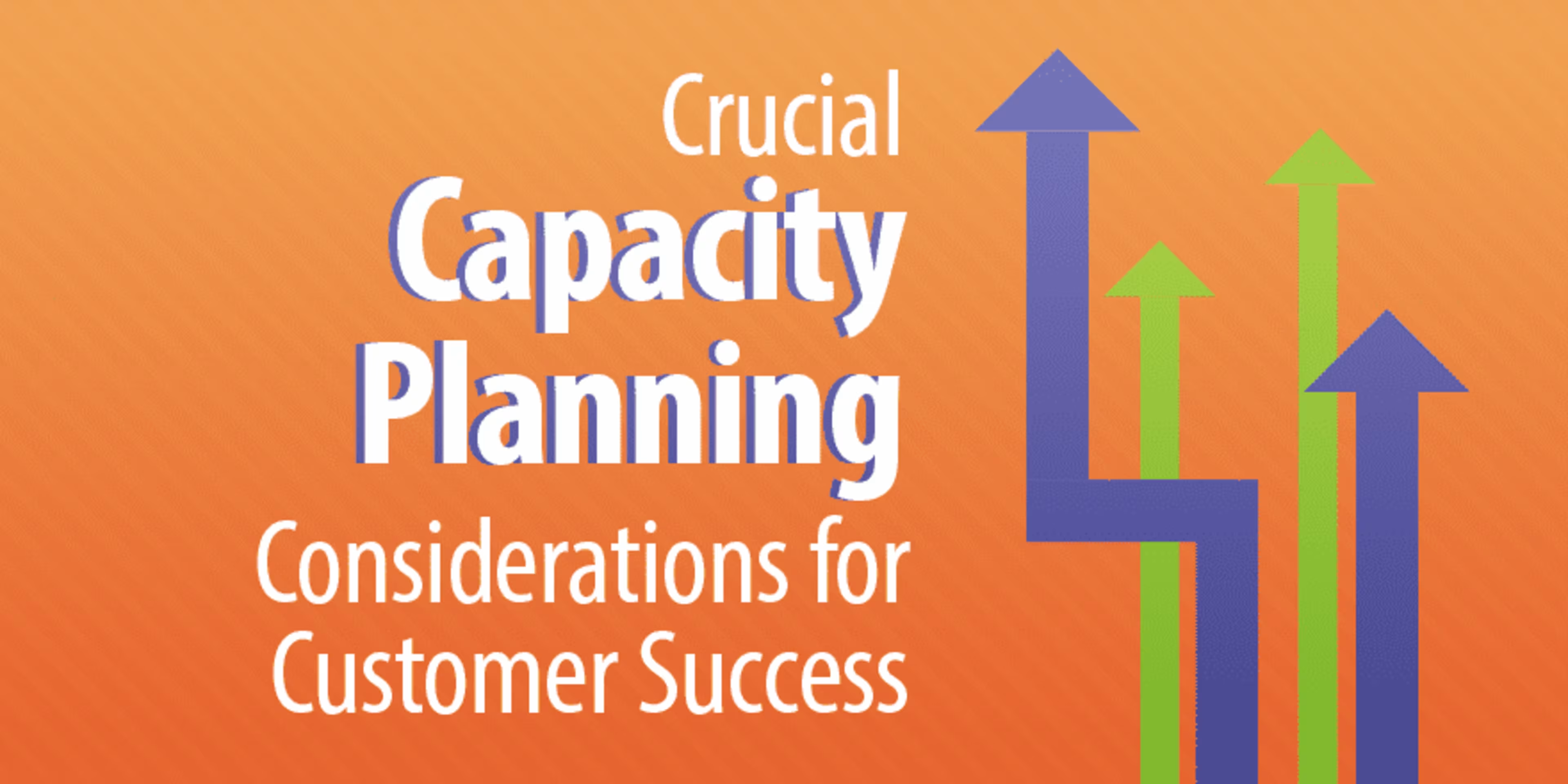
The three building blocks for customer success
As a VP of customer success, you want to get a handle on the real costs of hiring new customer success agents and your ideal ratio of agents to accounts. But, it's not a straightforward or simple calculation. While we all wish there were a magic customer service manager (CSM)/account ratio or accounting rate of return (ARR), Lincoln Murphy is right to say that the perfect coverage ratio is a myth.
So, how should you approach capacity planning for customer success? There are a lot of moving parts to building a profitable model, but there are three foundational considerations you should start with:
A realistic and marketable menu of offerings
Role definitions
A data-supported understanding of actual efforts as they affect actual capacity
Read on for more information about each and the role it plays in capacity planning.
1. Create a menu of services to provide to customers
How do you make sure your customers are reaping all the benefits of your product or service? First you need to know what prevents them from taking advantage of everything you have to offer. Those are your customer challenges.
Knowing the challenges your customers face when trying to use your product or service gives you a baseline for establishing a menu of services. A menu of services is a list of all the services your customer success team must provide to help your customers. Every menu item should address a customer challenge. But not every customer challenge needs a menu item. Decide which challenges must be addressed, and build your menu based on that.
Once you've created your menu of services, determine which services you'll pair/include with your sales and which you'll charge extra for (above and beyond the original sale price).
For example, my company, Bolstra, offers a menu that distinguishes which services are included within your initial purchase price and which are offered a la carte:
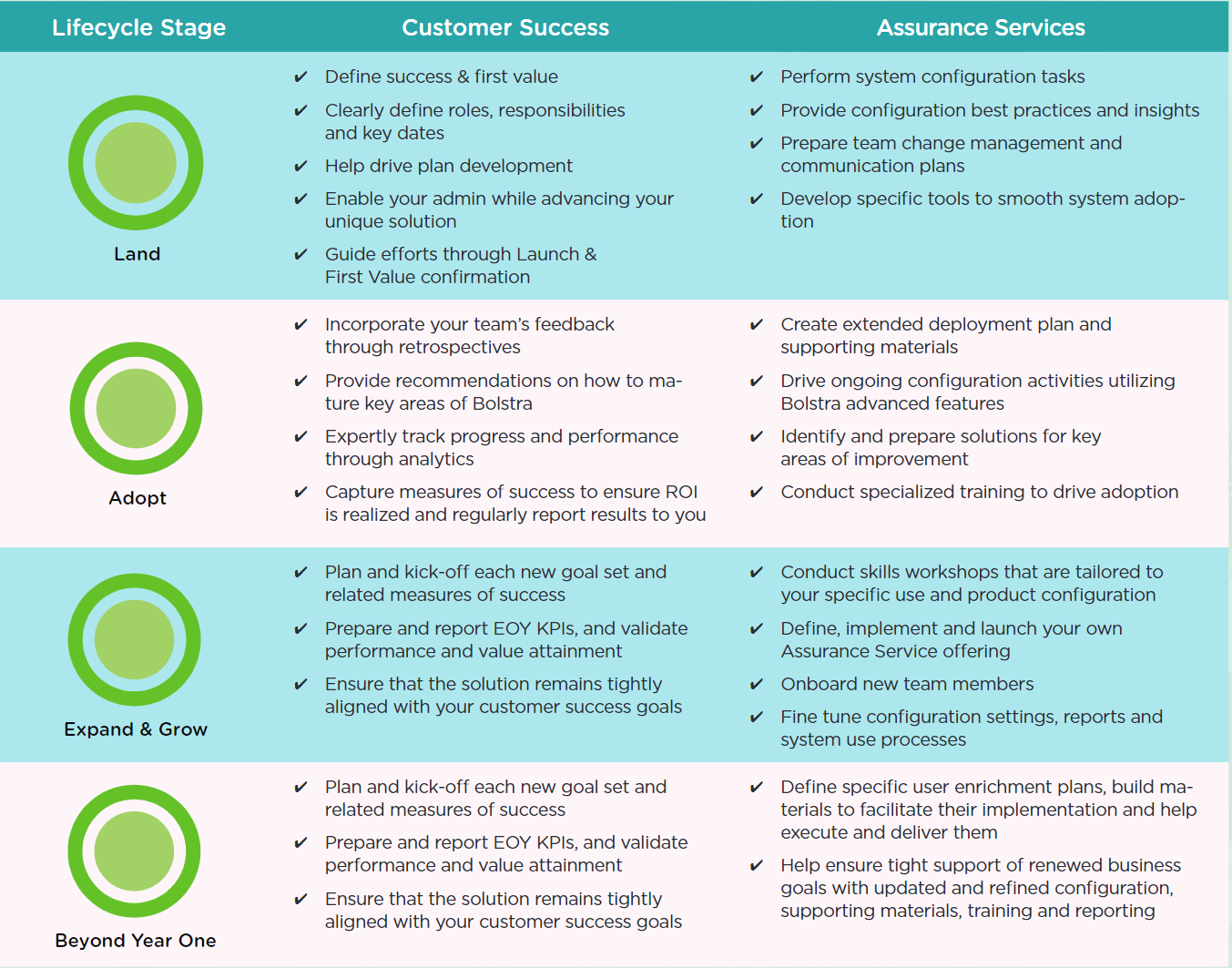
Bolstra's offerings menu
Capacity planning (and monetizing customer success) relies heavily on the accuracy of your menu.
2. Define team roles
Next, you need to identify who on your team will provide which services. Assess which customers will need which services, and assign and define related roles and responsibilities across your team.
To delegate effectively, you need to know your customers, your service offerings, and your team's skills. Consider segmenting your customer success team to align roles with employee skillsets. Technically skilled employees should handle implementation services, while agents with training and strategic skills can offer workshops and conduct retrospectives.
Strong leadership is necessary to define roles and clarify expectations for all team members. Accurate capacity planning relies on team members knowing and fulfilling their responsibilities.
3. Understand your team's effort and capacity
Customer service menus and staff role definitions are key components of making sure you've got the right people in the right roles, and the right number of them. But accurate capacity management planning also requires understanding that effort isn't always a simple formula or time-tracking exercise.
What you need is a more realistic estimate of how many clients or customers your team can effectively serve as it stands now.
Let's start our exploration of effort in the customer success context by defining some terms:
Designed effort: the amount of effort best practices analyses suggest an account should require.
Ideally, when estimating an account's designed effort, take into account any task that might takes an hour or more of your agents' time. This can include customer-facing meetings, prep, internal meetings, communications, and other efforts.
Here's an example:
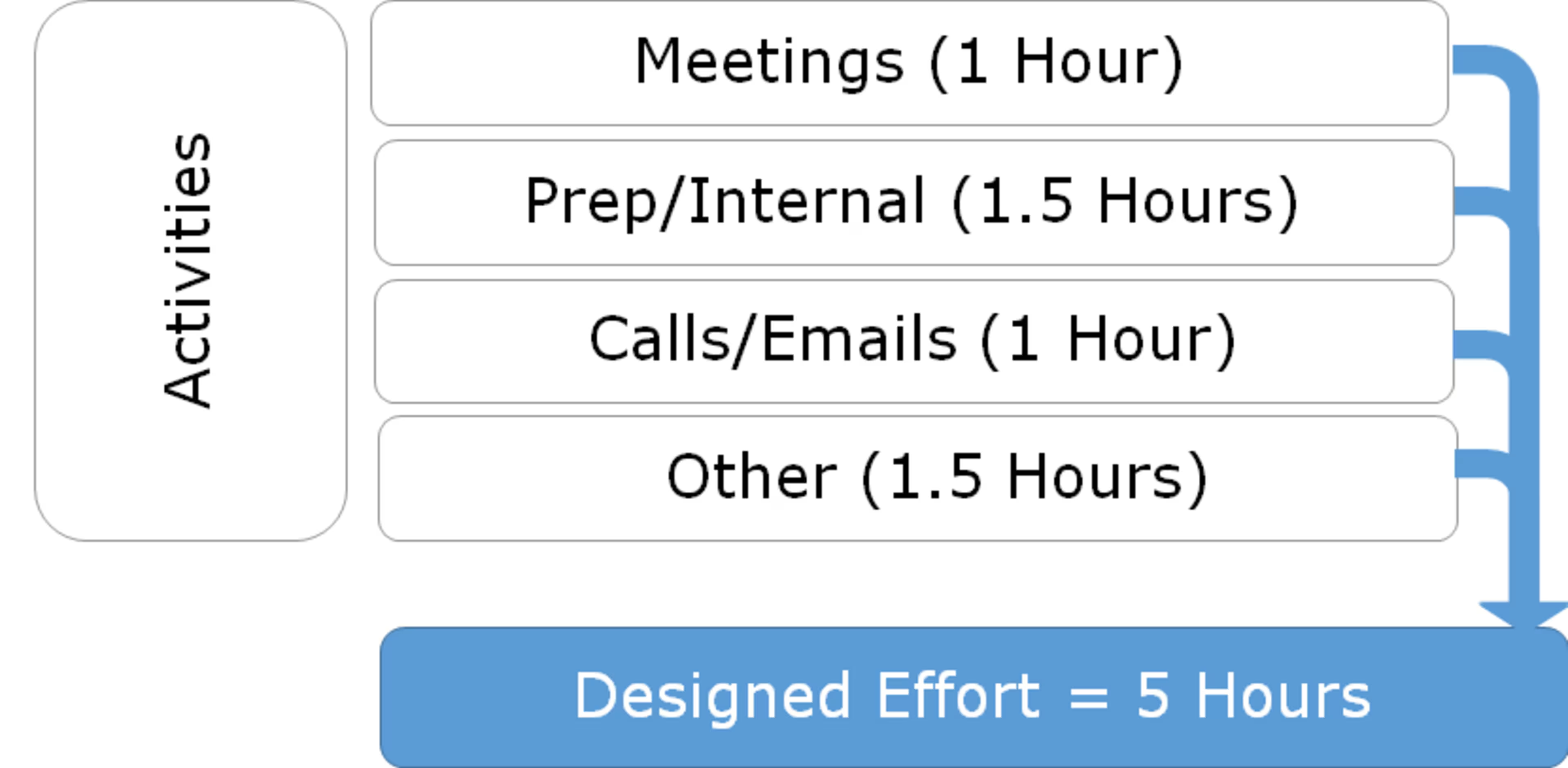
Sample designed effort calculation
Effective availability: the amount of time an agent is actually available to serve a client. To calculate effective availability, subtract non-client facing work such as internal meetings, distractions, and time to think from total working hours.
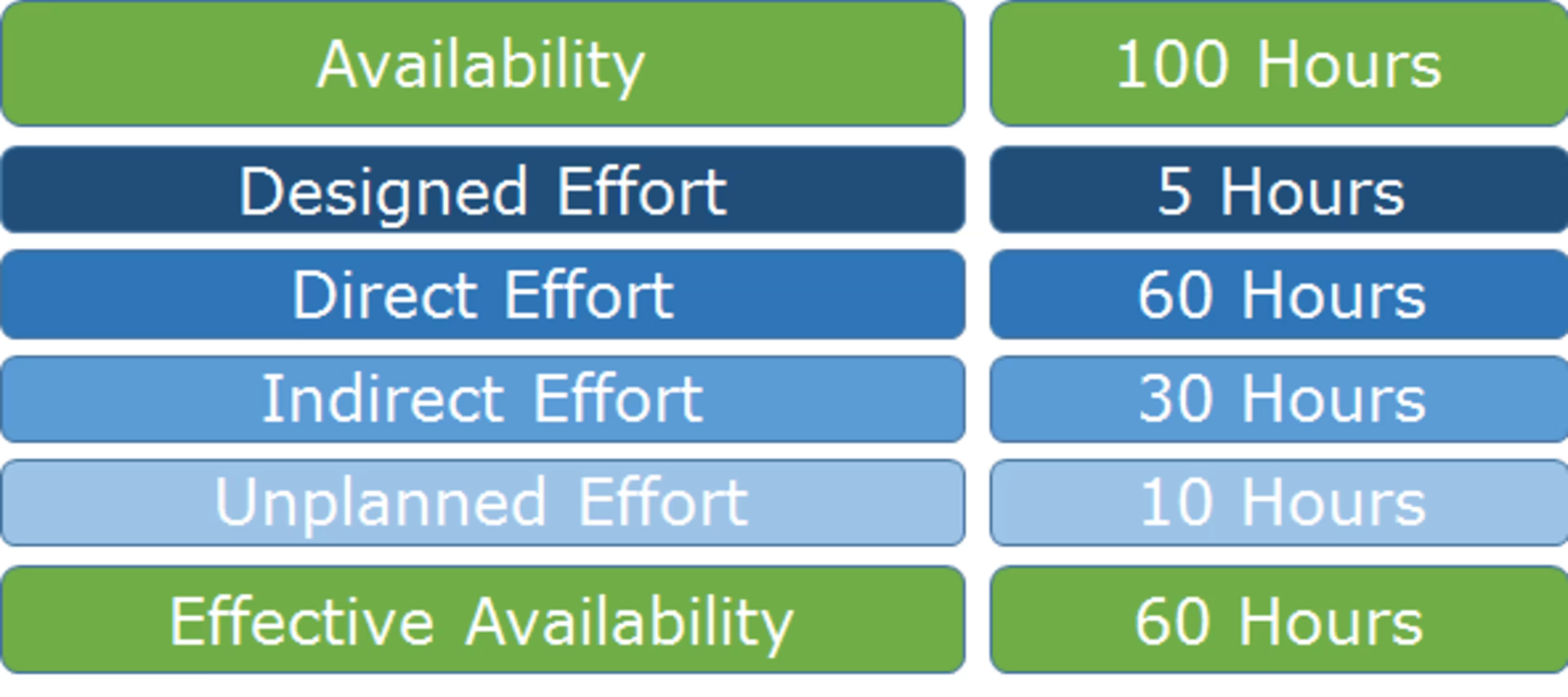
Sample designed effective availability calculation
For example, if an agent has 160 hours of total availability, they may only have 120 hours of effective availability if 40 hours of their allotted hours are consumed by internal meetings and/or distractions.
To gain a realistic view of your customer success team's capacity, you should calculate productive capacity: effective availability divided by designed effort equals the total number of accounts a CSM can actually handle.
Here's a productive capacity calculation using the information from the previous examples:
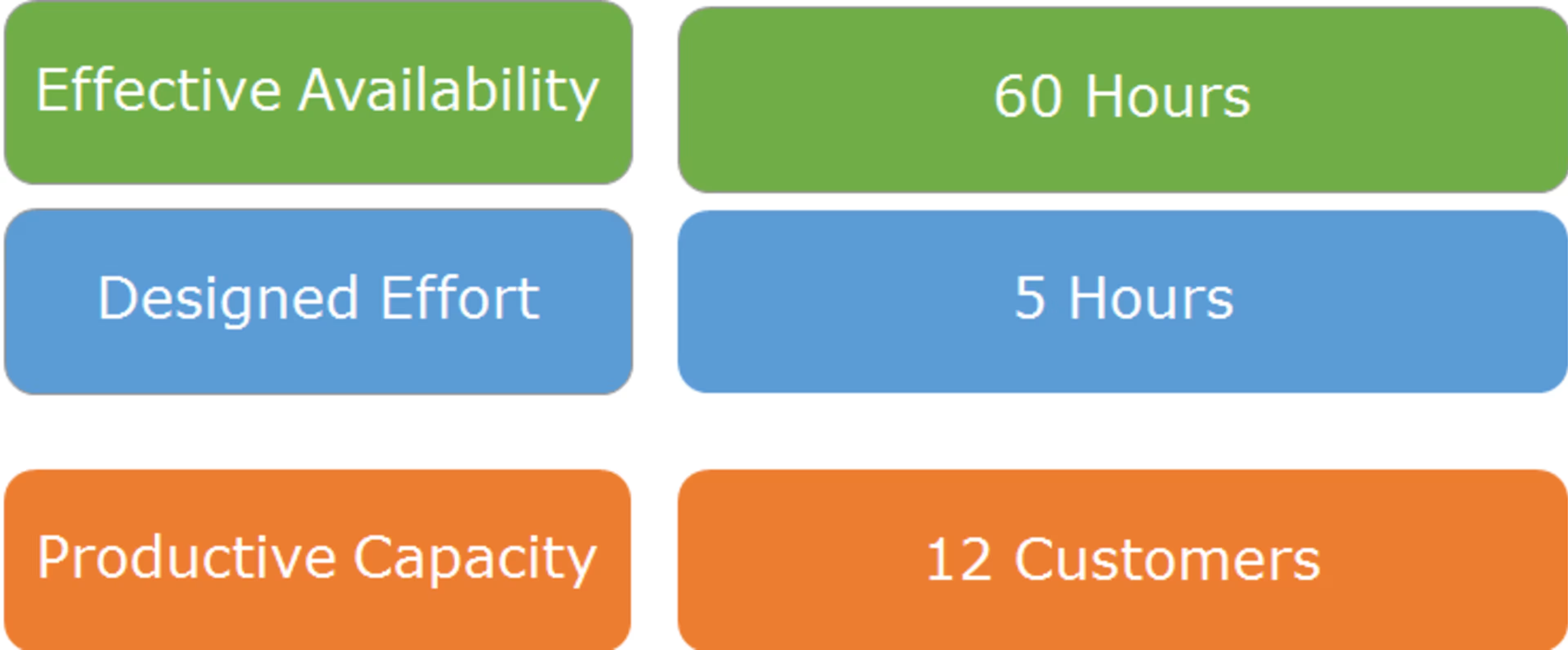
Sample productive capacity calculation
What you have when all this is done is a more realistic estimation of how many clients or customers your team as it's currently configured can effectively serve.
The next steps in capacity planning
Now that you have a handle on calculating productive capacity for your team as it is now, you can begin to conduct more accurate capacity planning for your CS team. Actual costs are best determined when you can glean real data on the time that each agent spends performing their duties for each account.
Using a customer success management platform that tracks time can help you consolidate this data.
Help desk software can help you discover what challenges your customers are facing when trying to use your product. When you use tagging, you can easily see which types of questions and concerns your customers are raising most often. This will give you insight into which services need to be on your menu.
Help desk software can also help you define your team roles by giving you a way to easily compare your agents. If an agent has a higher satisfaction score or lower time-to-resolution for a particular kind of problem, that's a hint about where they should focus their time. It will also help you estimate how much time each account will take to service.
Check out our help desk software directory to compare your options side-by-side.